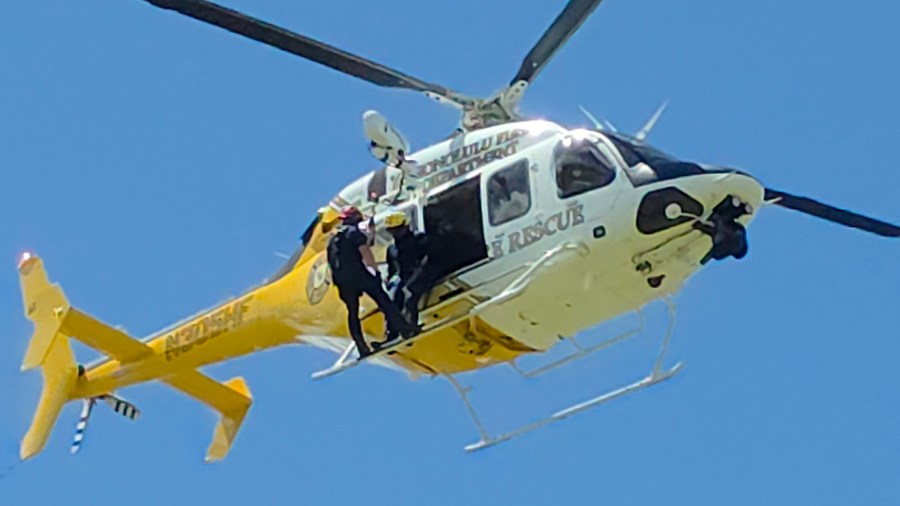HONOLULU (KHON2) — Oʻahu’s land and seascapes create some of the most diverse and beautiful places in the world for many locals and visitors to experience nature and history.
But with that comes a big responsibility to ensure
The Honolulu Fire Department’s new Bell 429 helicopter is changing the way rescue crews work in the mountains and over the ocean.
With two engines, advanced equipment and a powerful hoist system, the aircraft brings both speed and safety to missions that often mean life or death.
For Zachary Potter, pilot for the Honolulu Fire Department, the upgrade is about one thing above all.
“With the new aircraft, the Bell 429, for me, the number one thing is safety,” Potter said. He explained that older helicopters were single-engine models that forced patients to ride under the aircraft in a sling.
“Whereas with this new aircraft, it’s a twin engine; so, it has two engines. If one engine fails, we can actually keep it in the air, keep flying,” he said. The hoist allows rescuers to lift patients into the cabin instead of leaving them suspended below. “Overall, much more efficient and safer operation,” Potter added.
The changes are not small. In the past, patients sometimes dangled beneath the helicopter as crews carried them out of valleys. Now, rescuers can secure the patient inside the cabin before flying out.
Training for new tools
Learning to use the Bell 429 was not as simple as swapping one helicopter for another. The aircraft introduced a new way of working, and the department had to master both flying the machine and operating its hoist system in high-risk environments.
The pilots spent about a month learning to fly the Bell 429. Potter described crews’ training process in detail.
“We spent about a month learning how to fly the aircraft; and then, we spent about two to three months actually learning hoist operations with our partners with the rescue companies,” he said.
That training included guidance from outside contractors who showed crews the industry standards and best practices they now rely on in the field.
For Adrian Cravalho, captain for Rescue 1 in HFD, the Bell 429 is only as effective as the people trained to use it. He stressed that the department cannot afford to let skills fade, especially with equipment this advanced.
“We’re constantly training. Ever since this helicopter came on Island back in October, we’ve been constantly training with it,” Cravalho said. Even though the aircraft is fully operational, he explained that new members must still be drilled so the team is always ready for the next call.
Facing the conditions
Crews often respond to emergencies at places like Koko Head or Diamond Head, where heavy foot traffic brings more risk of injury or heat illness. Illegal or unsanctioned trails present even greater hazards. T
“Those are usually the ones that are a little bit more dangerous because they’re higher up in the mountains,” Potter said. “So definitely those unsanctioned trails are riskier for us due to the location where we’re having to fly.”
Flying rescue missions over Hawaiʻi’s mountains and shorelines is never routine. The winds shift, clouds close in and the margin for error is small. Potter made it clear that even with modern equipment, risk is always present.
“Anytime you are in around a helicopter, it’s inherently dangerous,” he said. As pilot in command, he explained, it is his responsibility to assess conditions and alert the incident commander when winds are too strong or visibility too poor to continue safely.
Pride in the mission
Rescue work pushes crews into dangerous places, but Potter said the reward comes in seeing how every part of the department works together.
“I feel very proud, not only for myself, but just to be a part of this bigger organization,” he said. The satisfaction, he explained, comes from watching flight crews, rescue companies and engine crews unite on complex missions and complete them safely.
For Cravalho, the pride is tied to trust. He spoke about the bond formed when every decision could mean the difference between life and death.
“We literally are each putting each other’s life… in the bottom of this helicopter or relying on the pilot to do what he needs to do,” he said. That reliance, he explained, builds more than teamwork. It creates a second family.
